Forest fire timber salvage??
This picture below shows a couple of Columbia Helicopter loggers trying to remove a tree that was cut, but rolled down into a stream. This large 16 foot log was too heavy (estimated at more than 22,000 lbs) for their Boeing Verthol helicopter to lift out. Usually, they use a much more powerful Chinook that can lift up to 20,000 lbs under ideal conditions. In this case, they're having to quarter the log, with much difficulty. The remaining logs won't be removed (a safety issue) unless their Chinook helicopter comes back in the near future.
Now, back to the controversy. A study conducted on Oregon's Biscuit Fire by Daniel Donato titled "Post Fire Logging Hinders Regeneration and Increases Fire Risk" sampled areas logged for damage to natural regeneration. The study was exceedingly narrow in focus, finding that seedlings indeed were killed by logging operations, and that logging slash also covered the ground after the trees were flown or skidded out. Such a simple and obvious "discovery" was published in "Science Magazine" and is now being used as "proof" that all salvage logging is always bad for our National Forests. These pictures below seem to refute Donato's study. The Power Fire Salvage Project was intended to reduce fuels, while recovering valuable timber, without impacting ecosystem values significantly. My pictures show that we have indeed been successful in accomplishing those goals.
The below picture was of a helicopter unit, with mostly small trees. Any substantial delay in cutting and processing this size tree into logs will render them useless for wood products and be left out in the woods as excess fuels, waiting for the next inevitable fire to sterilize the soil. As you can see, they did a very fine job of logging this particular piece of ground.
This next picture was in a tractor unit, where machines called skidders hauled the trees, branches and all, to a road to be processed into logs. This particular logger was very experienced and quite proud of his work. Only 8 months after logging, the ground looks like it has fully recovered, with no flammable logging slash in sight. This is truly "forest restoration", especially after some interplanting of trees to augment the natural regeneration.
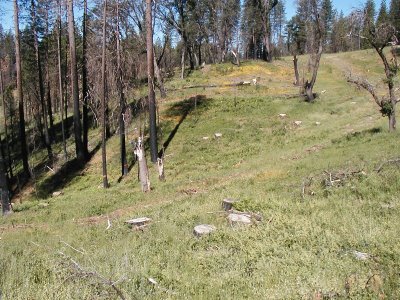
While Donato's study does prove that logging kills baby trees, it does not take into account that the dead trees WILL fall someday soon and kill those same trees, anyway. It also doesn't show which trees will burn up in a future catastrophic wildfire, fueled by massive amounts of dead trees not harvested. Many of those same seedlings won't survive competition from brush and other ground cover, like Bear Clover.
With a new fire salvage bill going through Congress, this controversy will only get more intense. Already, Donato has been grilled before a Congressional committee about the quality and intent of his study, as well as the publishing of it in "Science Magazine". The spin doctors on both sides of the fence will be manipulating and molding this study, both in Congress and in the courts. My own projects within the Power Fire are under a court injunction already and future fire restoration projects will be in limbo until the new salvage bill is passed into law, as well as surviving the inevitable court cases.
Labels: logging
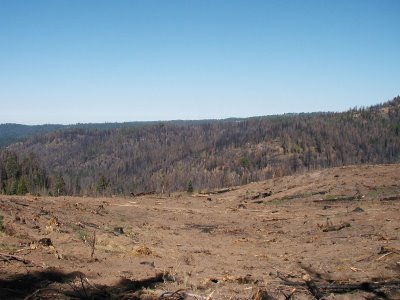
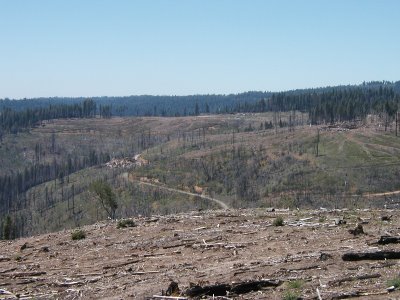
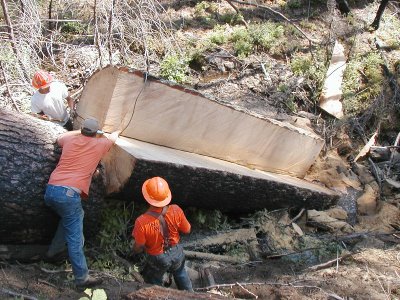
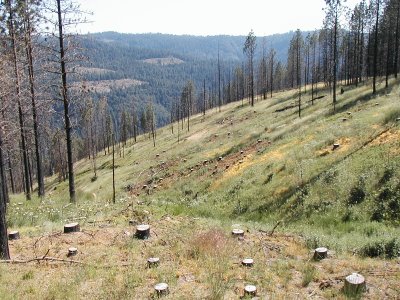

0 Comments:
Post a Comment
<< Home